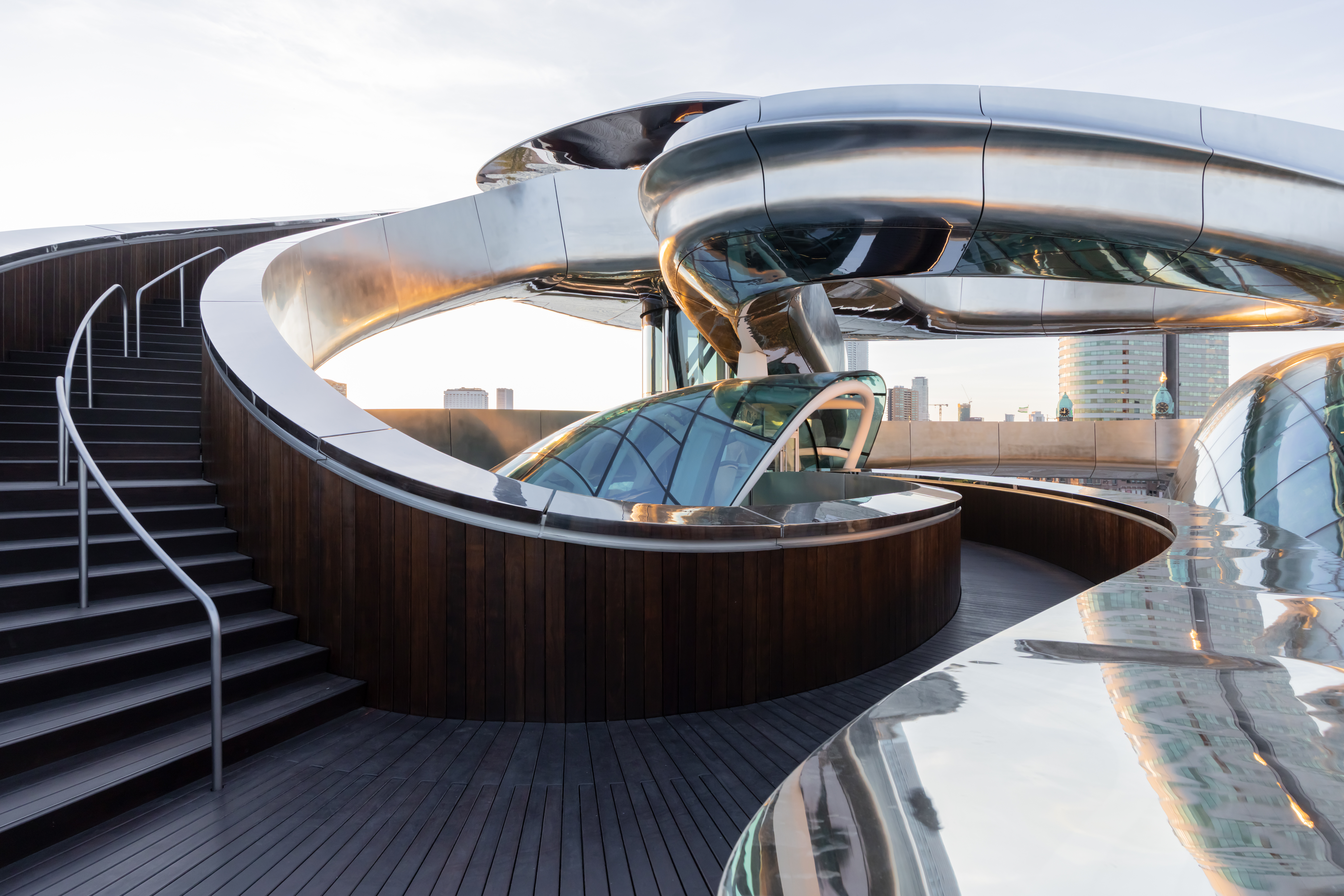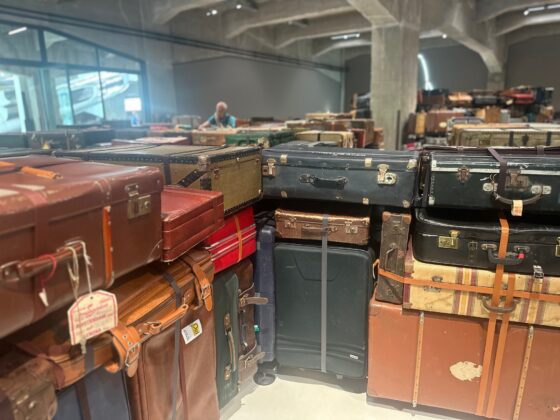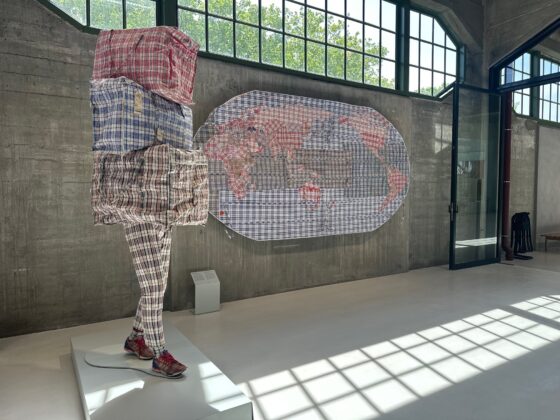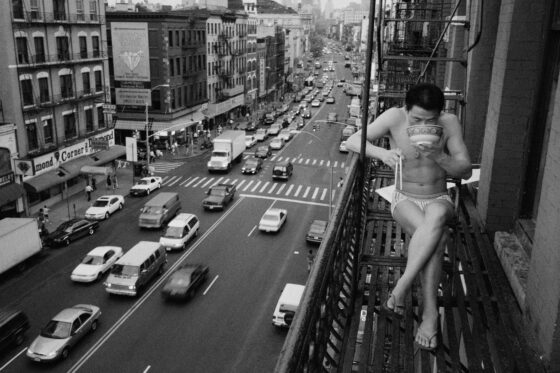“As long as human beings have existed, we’ve moved and migrated”
Lauren Comiteau
The Netherlands’ newest cultural institution, the Fenix, focuses on stories of migration in the culturally diverse port city of Rotterdam. It tells the fascinating tales of populations in constant flux through art, photography and historical and personal objects.
Selinay Sucu walks through the 16,000 square meter former warehouse of the Dutch cargo and passenger Holland America Line that from this week houses Fenix, the new art museum about migration.
Sucu is herself a third-generation Dutch woman. Her grandfather migrated to Rotterdam from the east of Turkey as a guest worker in the 1960s. After 11 years here, he sent for his family.
Then in the 1980s, he visited Istanbul with Sucu’s mother and brought back a handmade backgammon set.
“That backgammon set is so symbolic,” Sucu says, recounting her own migration story. “My grandfather was a tourist in his own country. And if he hadn’t left in the first place, he never would have been able to afford that beautiful backgammon board. It shows what he was able to do, not only for himself, but especially for his kids and grandkids. I’m very grateful.”
But it’s also symbolic to the 28-year-old Sucu in her role as Fenix’s curator of personal objects in the museum’s All Directions exhibition, which features more than 150 artworks from both emerging and renown artists, including Max Beckmann, Marc Chagall and American photographer Steve McCurry.
“The backgammon set was the starting point of this whole journey of finding new objects and portraying personal stories in the exhibition,” says Sucu, who was tasked with going around the city trying to collect them. “And I got to dive into my own personal family history because of the work I’m doing.”
These personal migration stories—that Sucu now helps others tell—is what Fenix is all about.
Humanity
“We really want to show that migration is a human story, a very personal one,” says Anne Kremers, director of Fenix. “As long as human beings have existed, we’ve moved and we’ve migrated, and we will keep on doing that because it is part of who we are. There’s a migration story to tell in every family.”
The museum aims to tell them through art, photography and historical and personal objects, including its 2,000-strong Suitcase Labyrinth, an interactive installation featuring both battered trunks and shiny new trolleys that tell the stories of where they—and their owners—came from or where they were going in the name of love, loss, hope and desperation.

“We really want to show the scale of migration, its intensity and breath,” says head of exhibitions Hanneke Mantel. “It could be migrating for adventure. It’s being forced to move. It’s happiness, and it’s deeply sad. And you can find all of these emotions here.”
What you won’t find is politics.
Bucking the trend
While the political landscape in much of the world, the Netherlands included, has taken on a more anti-immigration attitude since the museum was first conceived, the political story, says Mantel, has never been Fenix’s focus.
“It is still not the focus,” she says, repeating the museum’s mantra that migration is “timeless, universal and human”.
“What we are sharing is stories—stories of people, stories from the past, stories of now,” she says. “I think what you could say is that being neutral and presenting facts is in a way controversial right now. But I don’t want neutral to sound passive. What we want to show is the humanity. And I think that’s a stand in itself.”
Ode to Rotterdam
From Fenix’s massive first-floor square windows overlooking Rotterdam’s harbour, you can see the iconic Hotel New York, once home to the Holland America Line. It was from there that some three million migrants set sail in the late 19th and early 20th centuries—including Albert Einstein, Johnny Weissmuller and Willem de Kooning—mostly destined for the US and Canada.
The docks welcomed just as many newcomers into the country over the decades. Its role as both departure and arrival point earned it the moniker Pier of Tears—or zakdoekjeskade.
“The city of Rotterdam is shaped by migration,” says Mantel. “This is the place for a museum of migration in the Netherlands. Migrants bult up this city of over 170 nationalities.”

The museum’s works of art and historical objects reflect those journeys, from artist Red Grooms’ The Bus, a life-size recreation of a New York City bus filled with multicultural New Yorkers, to a piece of the Berlin Wall, from a man and map constructed from the nylon shopping bags used worldwide to the some 200 photographs that make up the mesmerizing Family of Migrants photo exhibition.
Staircases and ice cream
Everything at Fenix is heavy with symbolism, meaning and metaphor,
There is the gelato made by the Granucci family from Grandpa Luigi’s recipe that he brought to the Netherlands in 1929, the museum’s Anatolian-inspired food created by a chef from Istanbul, a shop curated with homey items, and an indoor space—the Plein—that is destined to become a public gathering place for dancers and language learners alike.
But most symbolic of all is the Tornado—a double-helix stainless steel structure that dominates both the building and the area’s skyline. Its two winding wooden staircases take visitors up to a rooftop platform, where they get a 360-degree view of Rotterdam.
But it’s the voyage up there that matters.
“It’s a journey, a metaphor for movement,” says designing architect Ma Yansong of the Chinese firm MAD Architects. “You see yourself in the reflection, you make choices, you meet random people, you end up in places. It’s reflective of the migrant experience. And in the end, you will meet altogether at the highest point, the platform, which I think is a metaphor for hope.”

The Note
Back down in the All Directions exhibitions, Sucu points out a note written by a donor to his aunt when he was 13 years old. She, like many, migrated from Suriname to the Netherlands in the 1970s after it gained independence.
Unable to get around to do her grocery shopping and not able to speak Dutch, her nephew wrote the note for her to show bus drivers and train conductors, who then helped her make the shopping journey to Rotterdam and back. Accompanying audio reads out the letter, while a family photo at a bus station completes the story.
“We place it right next to the bus by Red Grooms to showcase what the bus or any form of transportation can actually mean to people,” says Sucu. “We sometimes need it more than others, or we meet each other and it really helps us. It’s reflective of what people had to go through when there were no phones, no Google maps or anything.”
Most of the donated items like the note will eventually be returned to their original owners, says Sucu. “Then we will create space for new objects and new stories.”
Thank you for donating to DutchNews.nl.
We could not provide the Dutch News service, and keep it free of charge, without the generous support of our readers. Your donations allow us to report on issues you tell us matter, and provide you with a summary of the most important Dutch news each day.
Make a donation